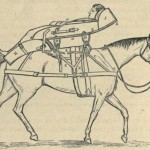The “smartification of cycling”. [Journal of Urban Technology]. “In cities worldwide, cycling is increasingly upgraded with smart technology and is included in smart cities’ visions and projects. This process has not been problematized in public discourse, as smart innovation is seen as a potential booster of the known benefits of cycling. Drawing on critical literatures on smart cities, smart mobility, and degrowth and using the case studies of Copenhagen and Amsterdam, this article opens up a more critical conversation on the subject, discussing the role of “technosolutionism,” technology push, and pro-innovation bias in the process of “smartification” of cycling.”
Distinction and alternative tech: Exploring the technocritical disposition. [New Media & Society] “How should we understand alternative social media and open-source technologies that seek to challenge the dominance of Big Tech? Are these ethical substitutes for monopolistic platforms and technological infrastructures, or “alternative” in the sense we might talk of alternative forms of culture?”
Things Used to Work in This Country. [The New Atlantis] “Personal technology used to be a machine. Now it’s a bureaucracy.”
“Wherever you get your podcasts” is a radical statement. [Anil Dash] “Podcasting as a technology grew out of the early era of the social web, when the norms of technology creators were that they were expected to create open systems, which interoperated with tools by other creators and even other companies.”
The Loss of Things I Took for Granted. [Slate] “Ten years into my college teaching career, students stopped being able to read effectively.”
Center for Technological Pain. [website] “DIY solutions to health problems caused by digital technologies.”
B C, Before Computers. On Information Technology from Writing to the Age of Digital Data. [Open Book Publishers] “Computer developments rely on a long history of humans creating technologies for increasingly sophisticated methods of manipulating information.”








